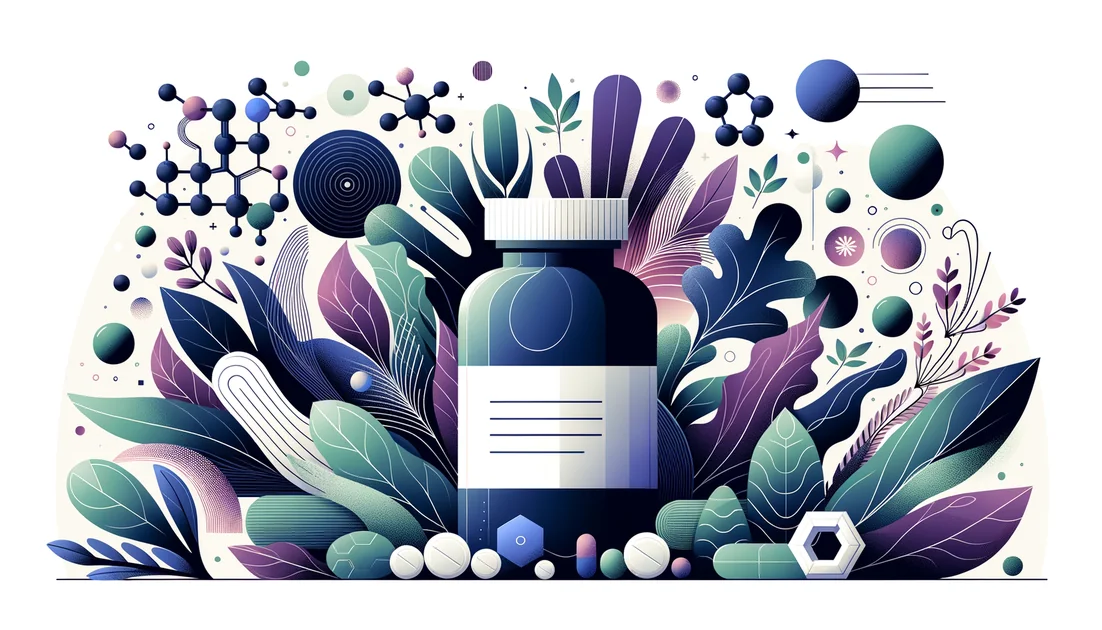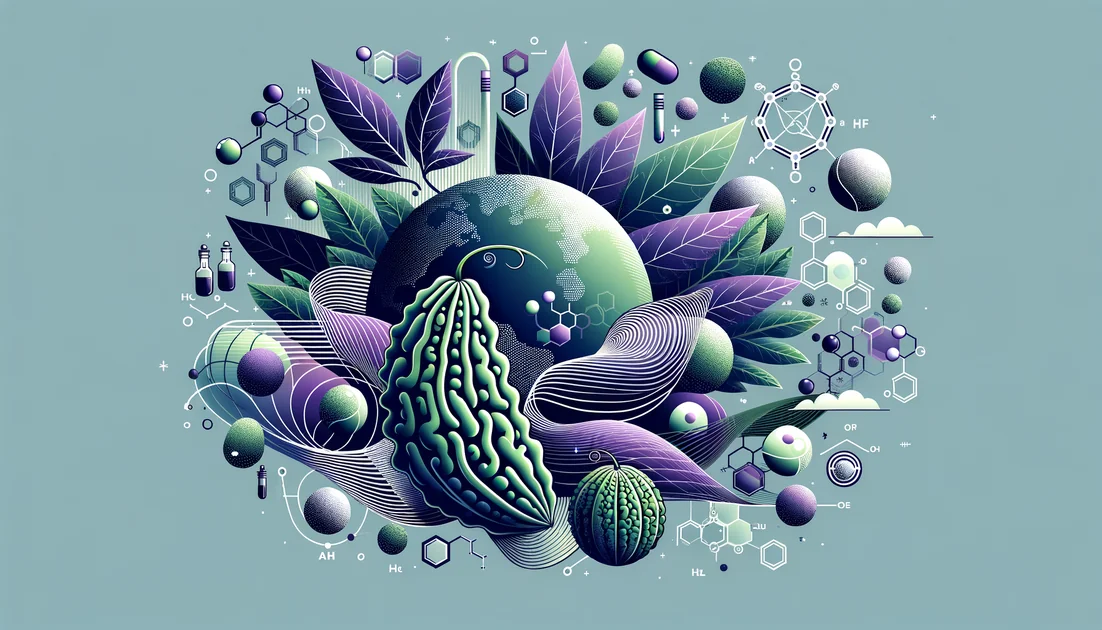
The Yeast That Outsmarts Antibiotics: From Jungle Fruit Skins to Hospital Wards—and What Comes Next
In 1923, during a cholera outbreak in Indochina, a French microbiologist watched locals chew lychee and mangosteen skins to quell relentless diarrhea. He followed the clue, isolated a hardy tropical yeast from the peels, and named it after himself: Saccharomyces boulardii. A folk practice had handed science a lead—and a century later, that yeast sits on pharmacy shelves worldwide. [1][2]
- Evidence
- Promising
- Immediate Effect
- Yes (mild) → 1-2 weeks
- Wears Off
- Clears within 3–5 days after stopping
From fruit skins to hospital wards
What makes this story unusual is the protagonist: a yeast. Because it's a eukaryote—more like us than bacteria—most antibiotics can't touch it. That simple twist helps explain why adding S. boulardii during antibiotic courses has repeatedly cut the risk of antibiotic-associated diarrhea in randomized trials and meta-analyses. One large review found the average risk dropped from roughly 19% to 8.5% (about one in 10 people spared). [3] Still, the setting matters: in some hospitalized populations without special risk factors, an individual trial showed no benefit, reminding us this isn't magic, it's context-dependent biology. [4]
What a yeast can do that bacteria can't
In lab and tissue studies, S. boulardii behaves like a microscopic cleanup crew for gut toxins and a coach for the gut's defenses. It secretes a 54-kDa protease—think molecular scissors—that chops up Clostridioides difficile's toxins and blunts their ability to latch onto the gut lining. [8][9] It also nudges the immune system to release more secretory IgA, the antibody that patrols the gut's surface like a protective paint, helping keep pathogens from sticking. [10] There's a practical quirk, too: S. boulardii doesn't set up permanent residence. It's more of a commuter than a colonizer, reaching steady levels in a few days and typically disappearing within 3–5 days after stopping—so benefits depend on taking it during the risk window. [11][12]
Real-world plot points
Acute childhood diarrhea: In a double-blind randomized trial, children given S. boulardii twice daily had shorter illness and faster to formed stools than placebo. For many parents, that translates to fewer days of mess and worry. [5]
Recurrent C. difficile disease: In a JAMA trial, adding S. boulardii to standard antibiotics didn't help first-episode patients—but in those with prior recurrences, it cut recurrences from about 65% to 35%. It's a supporting actor, not a soloist. [6]
A candid aside from a pioneer: "The probiotics didn't work well enough to cure patients, but the stool transplants miraculously did," said gastroenterologist Christina Surawicz when reflecting on tough C. difficile cases; probiotics can aid prevention or adjunctive care, but they don't replace definitive treatments. [22] Guidelines mirror that nuance. The American Gastroenterological Association suggests S. boulardii among options to prevent C. difficile in adults and children taking antibiotics, while recommending probiotics for active CDI only in trials. [7]
The traveler's companion—and an H. pylori surprise
When Austrian travelers swallowed S. boulardii before trips to high-risk destinations, fewer developed traveler's diarrhea, with dose-responsive protection in a 3,000-person, double-blind trial. Start a few days before wheels-up, continue through the trip—that was the successful pattern. [13] Another unexpected chapter: Helicobacter pylori. Across recent meta-analyses, adding S. boulardii to standard eradication regimens slightly boosted cure rates and reduced antibiotic side effects like diarrhea, bloating, and nausea in both adults and children. In other words, the yeast seems to steady the ship while the antibiotics do their work. [15][14]
How to think about timing and dose (told simply)
Because S. boulardii doesn't linger, timing is everything. In classic trials:
Antibiotics: 250 mg twice daily during antibiotics, often continued 1–2 weeks after (some studies used 1 g/day). [3][6]
Children with acute diarrhea: 250 mg twice daily for about 5 days. [5]
Travel: 250–500 mg daily, beginning ~5 days before departure and continuing during travel. [13]
Take-home idea: keep the yeast on board while the gut is under pressure.
Safety: rare, real, and avoidable risks
Although S. boulardii is generally well tolerated, rare cases of bloodstream infection (fungemia) have been linked to its use—especially in hospitalized or immunocompromised patients and those with central venous catheters. A registry study from five Finnish university hospitals found 46 Saccharomyces fungemias over a decade; at least 43% had recently received S. boulardii. [16] Case reports echo the pattern, including a 74-year-old with cholangitis and long-term probiotic use who developed fungemia but recovered with antifungals. [17] If antifungals are on board, they're likely to kill the yeast and negate any benefit anyway. [18] Two practical rules flow from this: avoid S. boulardii in severely immunocompromised or critically ill patients—especially with central lines—and don't pair it with antifungal medications meant to clear yeasts. [16][18]
Why this yeast keeps showing up in clinics
Micro-mechanistically, S. boulardii acts like a multi-tool in the gut: it clips toxins, helps the mucosal "paint job" (IgA) dry smoother, and seems to steady digestive enzymes and transporters—the gut's nutrient-processing gears—under stress. [8][9][10] That systems-level steadiness likely underpins its consistent performance in antibiotic-associated diarrhea, its adjunct role in H. pylori therapy, and its protective effect for travelers. As probiotic researcher Lynne McFarland put it, probiotics must be "alive.. in an adequate dose.. [with] some proven beneficial health effect." S. boulardii fits that bill for specific jobs, not all jobs. [23]
The horizon: from wild yeast to designer medicine
Scientists are now treating S. boulardii not only as a supplement, but as a delivery vehicle. One group engineered it to secrete a tetra-specific antibody that neutralized C. difficile toxins right in the gut, protecting mice from primary and recurrent infection—an elegant way to bring antidotes to the battlefield. [19] Others have used CRISPR to equip S. boulardii to secrete human lysozyme, hinting at made-to-order "living medicines" that bolster the gut's defenses on demand. [20] A century after a clue from lychee peels, a simple idea holds: sometimes the best way to help a fragile ecosystem is not to dominate it, but to steady it—precisely, briefly, and at the right moment. That's the quiet power of this yeast.
Key takeaways
- •Because most antibiotics don't affect this yeast, adding S. boulardii during treatment has repeatedly reduced antibiotic-associated diarrhea, roughly halving risk in pooled trials.
- •Benefits are context-dependent: while many studies show protection, some hospitalized groups without special risk factors saw no advantage.
- •In recurrent (not first-episode) C. difficile, adding S. boulardii to antibiotics lowered recurrences; it also modestly improved H. pylori eradication and reduced GI side effects.
- •Practical use: 250 mg twice daily during antibiotics (often continuing 1–2 weeks after); 250–500 mg daily for travel starting ~5 days before; pediatrics often 250 mg twice daily for 5 days in acute diarrhea.
- •It 'commutes,' not colonizes—use it only while the gut is under stress (antibiotics, travel, acute infection), then stop.
- •Safety first: avoid if severely immunocompromised, critically ill, or with central venous catheters; don't combine with antifungals, which inactivate the yeast.
You might also like
Explore more of our evidence-led investigations, comparisons, and guides across every article style.

Double Wood Supplements
The Paradox: A transparency-forward supplement brand with uneven third-party verification and compliance signals



Bitter Melon (Momordica charantia)
On a humid Okinawan morning, cooks slice ridged green batons of goya—bitter melon—into a sizzling stir-fry. Elders swear by its sting. Centuries earlier, the plant was carried across oceans, eventually taking root from Asia to the Caribbean and the American South. The paradox is irresistible: can bitterness, once a warning sign in nature, become a guide to metabolic balance?[1][2]

Alpha GPC + Uridine: Can This Duo Build Better Synapses?
The duo is a plausible dual-pathway stack (choline + uridine) with animal and mechanistic support; direct Alpha GPC + UMP human data are lacking, so synergy is theoretical, not proven.

Tocotrienols
The stealthier cousins of vitamin E—built with springy tails that move differently in cell membranes and behave differently in your body.


